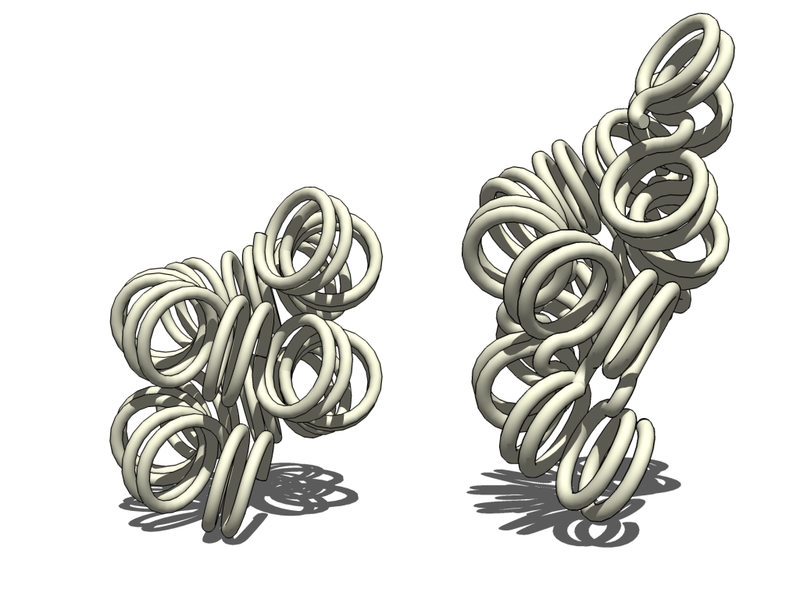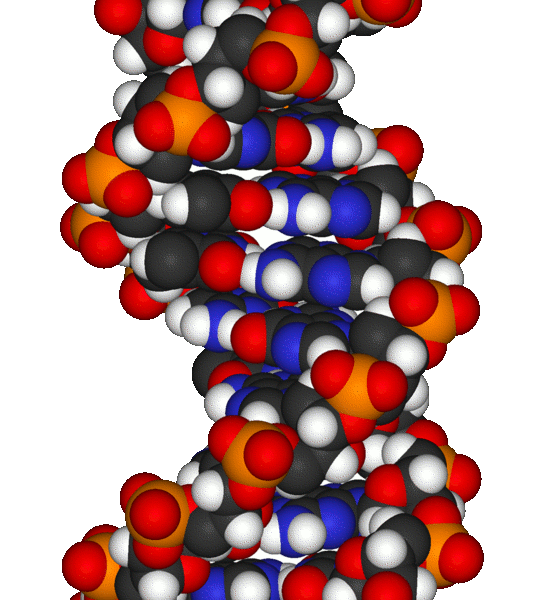Exploring the Exciting field of Epigenetics
Interview with
Chris - In the 1950s, James Watson and Francis Crick, working at Cambridge University, discovered the structure of DNA. Made up of just 4 different bases or letters - A, C, T, G - which are linked together into long molecules that spell out genetic words or genes, DNA functions a bit like a recipe book which tells you to cook up the chemicals that they need to function. But different sorts of cells need to use different genes, or recipes, to do their different jobs and how this is controlled is partly down to a process called epigenetics.
Chris - Joining us to explain how this works is Stefanie Seisenberger from the Babraham Institute in Cambridge. Hello, Stefanie.
Stefanie - Hello.
Chris - So, how does all this work then?
Stefanie - As you said, different cells in your body need to take on completely different functions and this is all down to which genes are active or inactive in each individual cell. So, each gene has a molecular switch which can turn the gene on or off and it's those switches that we study in epigenetics.
Chris - When you say 'switches', how do they work? What sorts of switches are we talking about here?
Stefanie - One of the hallmarks of epigenetics is DNA methylation. They're small chemical groups that are attached directly to the DNA and they're usually associated with turning a gene off. But there are also proteins called histones that DNA is wrapped around. We know that DNA is wrapped and packed very tightly in a cell. Depending on which modifications are attached onto the histones, DNA can be wrapped more tightly or less tightly and depending on that, a gene can be kept active or inactive.
Chris - So, is this sort of 2-dimensional control here, isn't there? So we've got things that can stick onto the DNA physically and then things that will stick onto the proteins that DNAs wound around, and this affects the shape of the DNA. And therefore, whether or not, it gets read.
Stefanie - You have several layers or several ways of affecting gene activity by the DNA sequence itself or by the proteins that DNA is wrapped around.
Chris - How are these markers or these chemical groups added either to the DNA or to those proteins in the first place?
Stefanie - There are specific proteins that do their jobs. So there are enzymes called DNA methyl transferase that attach to methyl groups to the DNA directly, but there are also proteins that modify their histones. So again, you have several signalling layers that can be accessed.
Chris - So they're like miniature machines I suppose, they go along wondering along and adding these chemicals onto the DNA to open it up or close it off.
Stefanie - Exactly, yes.
Chris - When we talk about a cell having a certain  epigenetic profile, a cell that does a certain job say, a skin cell compared with a gut cell or something, if I compared the profile of those markers in the two cell types they would look different between the two types of cell.
epigenetic profile, a cell that does a certain job say, a skin cell compared with a gut cell or something, if I compared the profile of those markers in the two cell types they would look different between the two types of cell.
Stefanie - Definitely different, exactly. That's what we call cellular identity - each cell has a certain job or does a specific function and each cell has a specific epigenetic profile that mirrors that function, and that's basically how a cell knows what it is and what it has to do.
Chris - So, how does that epigenetic profile get set in my gut cells? How does it know to put those markers on the right places in that cell and a skin cell to do the equivalent?
Stefanie - So, that would probably start very early on already in embryonic development. So you start off with one cell basically...
Chris - That's a fertilised egg.
 Stefanie - Exactly and then that develops further into a structure called the blastocyst. And here, you have embryonic stem cells, and they can turn into any cell type in the body. These develop further and get pushed into what we call a certain cellular lineage or cellular identity. So you get certain methylation marks or other marks that contribute to cells taking on a certain function, and that can later on in life then be further modified.
Stefanie - Exactly and then that develops further into a structure called the blastocyst. And here, you have embryonic stem cells, and they can turn into any cell type in the body. These develop further and get pushed into what we call a certain cellular lineage or cellular identity. So you get certain methylation marks or other marks that contribute to cells taking on a certain function, and that can later on in life then be further modified.
Chris - So, as the embryo subdivides into these different lineages or cells that are going to produce different tissues, the cells then add these markers as they go through. So, as they become more and more specialist.
Stefanie - Exactly, so that cell fate is already decided in the embryo and then you just add onto that and get more and more specialised cells at the end.
Chris - So, looking at one very particular and important tissue which is the tissue that makes our cells that are going to enable to reproduce - in a case of a man, that's the testes, and in the case of a woman, the developing ovary to make all of her future eggs. They've got to produce a cell, sperm or ova, in which these epigenetic tags have been wiped away.
Stefanie - Yes, so it happens even earlier than that.  So, quite early in the developing embryo, you already set aside the cells that will later on become sperm or egg. And in these particular cells, what happens is that epigenetic information gets reset completely on a global scale. So they sort of wipe out all methylation marks and also the histone marks become reset.
So, quite early in the developing embryo, you already set aside the cells that will later on become sperm or egg. And in these particular cells, what happens is that epigenetic information gets reset completely on a global scale. So they sort of wipe out all methylation marks and also the histone marks become reset.
So you know how environmental influences can affect not only the mother, but also the developing child within her, but as we now know, this can also affect the cells within the developing child that will later on become the grandchildren or contribute to their grandchildren. So, should there be any environmental influence that have put on epigenetic marks in a wrong way, that can be wiped out and you provide a clean slate for the third generation.
Chris - But conversely, when a woman is pregnant with say, a daughter, a developing daughter inside her, then that daughter is going to have her own eggs being incorporated into her ovary. So, at one point, there is three generations there. There's the woman herself who's pregnant then the baby inside her, and that baby's babies.
Stefanie - Yeah, exactly. It's three generations. So, it's not only environment influences of the pregnant mother not only affect the child, but also, the grandchildren.
Chris - Do we know whether that wiping out is genuinely comprehensive at that stage or is it possible that a growing baby is being exposed to various factors from the mother's environment and that they can set genes for the life of that baby and potentially the life of the baby's offspring?
Stefanie - We don't understand exactly how, but we know it does happen. So there are multiple examples, also in history where things like that happened, but we're just starting to understand how this whole process works and how things can escape to solve the reprogramming process.
Chris - I've got a question here from Emily Seward who has just sent this in and said, "Epigenetic changes and preferences..." she's asking about why you like things and why you don't. "could it be that when you like something when you're older, but don't like it when you're younger, could some of these preferences be - and that's obviously a slightly simplified thing, but could it be that part of our changing behaviour or the way we age could be down to epigenetic programming?"
Stefanie - Yeah, so epigenetics is a very important factor in ageing and that's something that's become more and more clear in recent years. Specific traits or likes or dislikes, I don't know how much that is down to epigenetics, but I wouldn't be surprised if that is the case.
Chris - And what about reversing this because Teo Gibson has got in touch and said, "Is there any research into undoing some of the stuff that's been done?" and you were mentioning about how a baby inside a mother who's pregnant has the future babies inside that. He says here, "If our parent's lifestyles before we were conceived can determine how much of our DNA expresses itself, is there any research to potentially undoing things like predisposition to obesity, diabetes, and addiction?"
Stefanie - Undoing things, I am not sure about, but simply by having a healthy lifestyle, you can take preventative measures. And simply, by being aware that what you do, what you eat, what you expose yourself to, will affect future generations, can maybe raise awareness and help preventing damage.
Chris - Stefanie, thank you very much. Stefanie Seisenberger from the Babraham Institute.










Comments
Add a comment